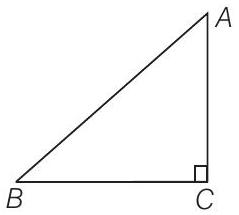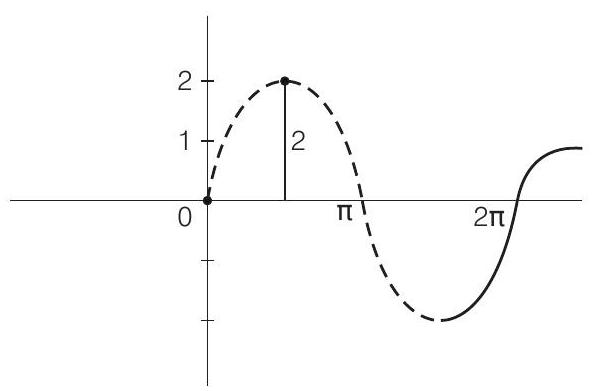Trigonometric Functions
Short Answer Type Questions
1. Prove that
Thinking Process
Here, use the formulae i.e.,
Show Answer
Solution
2. If
Show Answer
Solution
Given that,
Hence proved.
3. If
Show Answer
Solution
Given that,
Using componendo and dividendo, we get
4. If
Show Answer
Solution
Given that,
5. If
Thinking Process
First of all rationalise the given expression and used the formula, i.e.,
Show Answer
Solution
Given that,
6. Prove that
Show Answer
Solution
LHS
Hence Proved
7. If
Show Answer
Solution
Given that,
and
On squaring and adding of Eqs. (i) and (ii), we get
8. Find the value of
Show Answer
Solution
Let
9. Prove that
Thinking Process
Here, apply the formula i.e.,
Show Answer
Solution
10. If
Show Answer
Solution
Now,
Also, Given that,
From Eqs. (iii) and (iv),
11. If
Show Answer
Solution
Given that
and
12. If
Show Answer
Solution
Given that,
Hence proved.
13. If
Show Answer
Solution
Given that,
Using componendo and dividendo,
14. If
Show Answer
Solution
Given that,
Trigonometric Functions
15. If
Thinking Process
If
Show Answer
Solution
Given that,
On squaring both sides, we get
Alternate Method
16. Find the most general value of
Show Answer
Solution
The given equations are
From Eq. (ii),
Hence, the most general value of
17. If
Show Answer
Solution
Given that,
18. If
Show Answer
Solution
Given that,
So, the values of
19. If
Show Answer
Solution
Given that,
Hence, the solutions are
Long Answer Type Questions
20. If
Express
Show Answer
Solution
Given that,
and
and
21. If
Show Answer
Solution
Given that,
Using componendo and dividendo rule,
22. Find the value of the expression
Show Answer
Solution
Given expression,
23. If
Show Answer
Solution
Given that,
Since, this equation has
24. If
Show Answer
Solution
Given that, and
Now,
From Eqs. (i) and (ii), we get
25. If
Show Answer
Solution
Given that,
26. Find the value of
Show Answer
Solution
Given expression,
27. Find the general solution of the equation
Show Answer
Solution
Given equation,
28. Find the general of the equation
Show Answer
Solution
Given equation,
29. Find the general solution of the equation
Show Answer
Solution
Given equation is,
From Eq. (i),
Alternate Method
Now,
From Eq. (i),
Objective Type Questions
30. If
(a) 1
(b) 4
(c) 2
(d) None of these
Show Answer
Solution
(c) Given that,
31. If
(a)
(b)
(c)
(d)
Show Answer
Solution
(d) Given that,
We know that,
32. If
(a)
(b)
(c) 0
(d)
Show Answer
Solution
(d) Given that,
33. Which of the following is not correct?
(a)
(b)
(c)
(d)
Show Answer
Solution
(c) We know that, the range of
Hence,
34. The value of
(a) 0
(b) 1
(c)
(d) Not defined
Show Answer
Solution
(b) Given expression,
35. The value of
(a) 1
(b)
(c)
(d) 2
Show Answer
Solution
(c) Given expression,
36. The value of
(a)
(b) 0
(c) 1
(d) -1
Show Answer
Solution
(b) Given expression,
37. If
(a)
(b)
(c)
(d)
Show Answer
Solution
(c)
38. The value of
(a)
(b)
(c)
(d) 1
Show Answer
Solution
(a) Given expression,
39. Which of the following is correct?
(a)
(b)
(c)
(d)
Show Answer
Solution
(b) We know that, if
40. If
(a)
(b)
(c)
(d)
Show Answer
Solution
(d) Given that,
Now,
41. The minimum value of
(a) 5
(b) 9
(c) 7
(d) 3
Thinking Process
For the expression
Show Answer
Solution
(d) Given expression,
Hence, the minimum value of
42. The value of
(a)
(b)
(c)
(d) None of the above
Show Answer
Solution
(a)
43. The value of
(a)
(b)
(c) 1
(d) 0
Thinking Process
Use formula i.e.,
Show Answer
Solution
(d) Given expression,
44. The value of
(a) -1
(b) 0
(c) 1
(d) Not defined
Thinking Process
Show Answer
Solution
(c)
45.
(a)
(b)
(c)
(d)
Show Answer
Solution
(b) Given expression,
46. The value of
(a)
(b) 1
(c)
(d)
Thinking Process
Use the formula
Show Answer
Solution
(c) Given expression,
47. If
(a) 1
(b) 2
(c) 3
(d) 4
Show Answer
Solution
(c) Given that,
Now,
Also,
From Eq. (i),
48. The value of
(a)
(b)
(c)
(d) 1
Show Answer
Solution
(c) Given expression,
49. The value of
(a) 1
(b) 0
(c)
(d) 2
Thinking Process
Here, use the formula i.e.,
Show Answer
Solution
(b) Given expression,
50. If
(a) 1
(b)
(c) 0
(d) -1
Show Answer
Solution
(c) Given that,
On squaring both sides, we get
51. If
(a) 1
(b) 2
(c) -2
(d) Not defined
Thinking Process
Formula i.e.,
Show Answer
Solution
(b) Given that,
Now,
We know that,
From Eq. (i),
52. If
(a)
(b)
(c)
(d)
Thinking Process
Use
Show Answer
Solution
(c) Given that,
53. The number of solutions of equation
(a) 0
(b) 1
(c) 2
(d) 3
Show Answer
Solution
(c) Given equation,
Hence, only two solutions possible.
54. The value of
(a)
(b) 1
(c)
(d)
Thinking Process
Here, apply the formulae i.e.,
Show Answer
Solution
(a) Given expression,
55. If
(a)
(b)
(c)
(d)
Thinking Process
Use the formulae i.e.,
Show Answer
Solution (b)
56. The value of
(a)
(b)
(c)
(d)
Show Answer
Solution
(a) Given expression,
57. If
(a)
(b)
(c)
(d)
Thinking Process
Use
Show Answer
Solution
(b) Given that,
From Eq, (ii),
58. If
(a) a
(b)
(c)
(d) None of these
Show Answer
Solution
(b) Given that,
59. If for real values of
(a)
(b)
(c)
(d) No value of
Thinking Process
The quadratic equation
Show Answer
Solution
(d)
For real value of
which is not possible.
Fillers
60. The value of
Show Answer
Solution
Here,
61. If
Show Answer
Solution Here,
62. If
Thinking Process
Use
Show Answer
Solution
Given that,
63. If
(i)
(ii)
Show Answer
Solution
Given that,
On squaring both sides, we get
(ii)
64. In right angled
Show Answer
Solution
In right angled
So, the required equation is

65.
Thinking Process
Use formulae i.e.,
Show Answer
Solution
Given expression,
66. Given
Show Answer
Solution
Given function,
So, the value of
67. The maximum distance of a point on the graph of the function
Show Answer
Solution
Given that,
Graph of

Hence, the maximum distance is 2 units.
True/False
68. In each of the questions 68 to 75 , state whether the statements is True or False? Also, give justification.
Thinking Process
Show Answer
Solution
True
69. The equality
Show Answer
Solution
False
Given that,
It is possible only if
70.
Show Answer
Solution
False
71.
Show Answer
Solution
True
72. One value of
Show Answer
Solution
False
Given equation,
which is not possible.
73. If
Show Answer
Solution
True
Given that,
74. If
Show Answer
Solution
True
75. If
Thinking Process
Use the formulae i.e.,
Show Answer
Solution
True
76. In the following match each item given under the Column I to its correct answer given under the Column II.
| Column I | Column II | ||
|---|---|---|---|
| (i) | (a) | ||
| (ii) | (b) | ||
| (iii) | (c) | ||
| (iv) | (d) |
Show Answer
Solution
(i)
(ii)
(iii)
(iv)
Hence, the correct mathes are (i)






